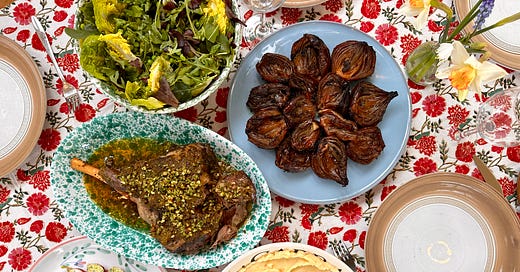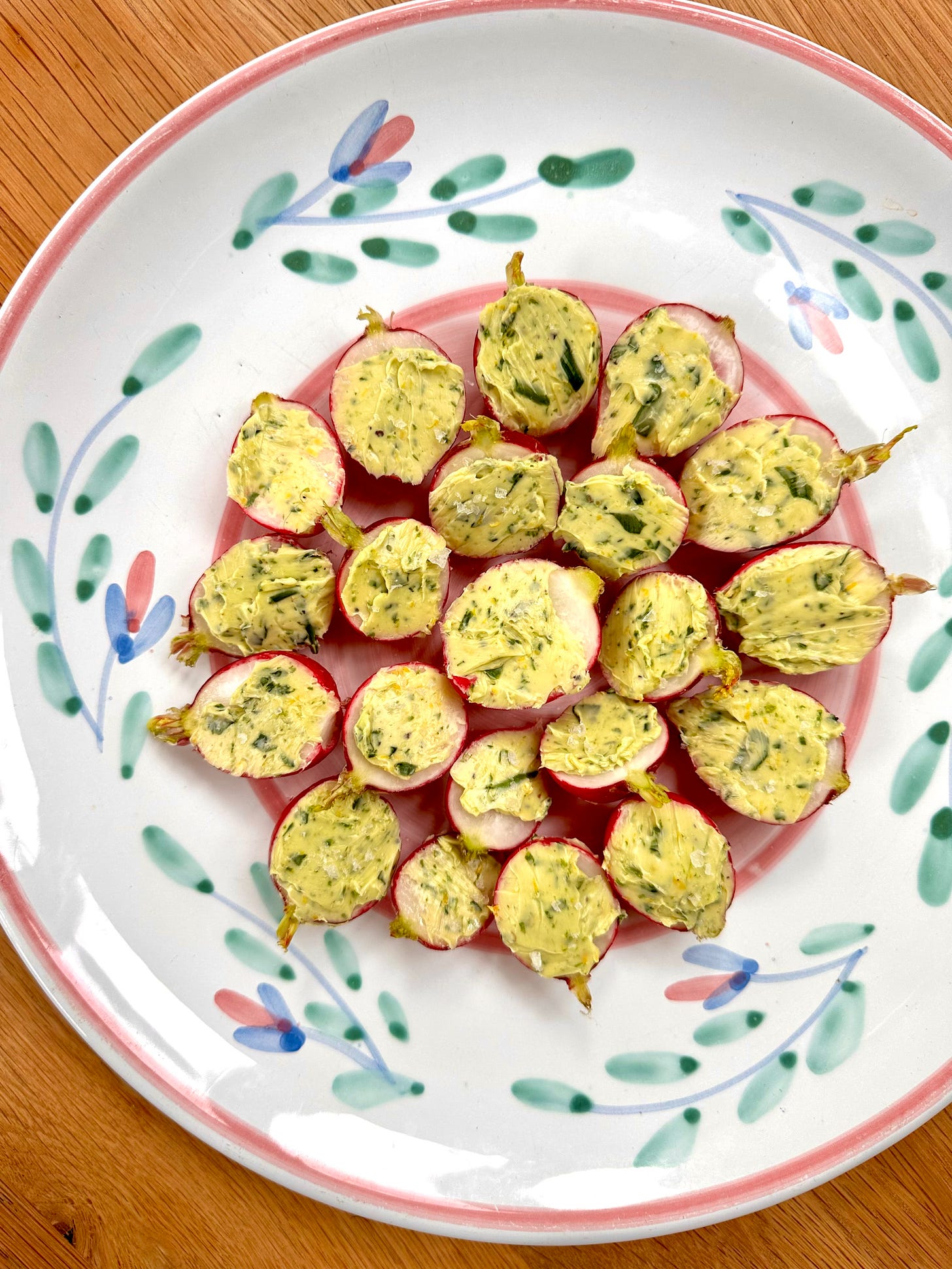April #2 - Easter Feasting
Nothing like a fridge full of spring greens and a bit of sunshine to brighten the spirits.
Happy Bank Holiday, everyone! This post is all about the history of Easter and the celebration of beautiful spring.
HISTORY & FUN FACTS:
Easter refers to the Christian celebration marking the end of Lent, but this time of year is also honoured through Jewish Passover, the Spring Equinox, and various other traditions. It’s a time to celebrate light, birth, and a renewed sense of energy.
I won’t put you through my hazy retelling of the Christian story from Palm Sunday to Easter Sunday. If you're curious, Google will do a better job! What I did want to explore is where all the familiar Easter symbols come from... and of course, what we eat.
In many parts of the world, we either eat bunny-shaped chocolate or chocolate that's supposedly delivered by a bunny. The hare or rabbit was the symbol of Eostre - yes, the eager-eyed among you might spot a link to the word Easter (and of course Oestrogen) - the pagan goddess of dawn and fertility, celebrated during the Spring Equinox. I’m not handing out prizes for guessing the link between rabbits and fertility!
In France, however, it's not a bunny but winged bells that bring children their Easter chocolate. According to an old Catholic tale, church bells fly off to Rome on Good Friday to be blessed by the Pope. The churches remain silent until the bells return on Easter Sunday, ringing out to announce the resurrection and dropping sweets for good children on their way.
Much of France’s Catholic symbolism endures outside the faith, such as the tradition of eating fritures: literally meaning “fried things”, but in this case, it refers to little fish, shellfish, and shell-shaped chocolates sold only at Easter. These symbolise the miraculous catch of fish, one of Jesus’s many miracles, and they’re rather delicious.
Eggs make an appearance in most countries: hen’s eggs are dyed, painted, or stuffed into loaves, the famous Fabergé eggs were designed as an Easter gift for the Russian Tsar and of course, there are the moulded chocolate ones invented in the 20th Century. Symbolising both birth and new beginnings, eggs are the perfect emblem of spring. They were also traditionally forbidden during Lent, making them part of the celebratory feast once it was over.
In Western Europe, it’s customary to eat lamb on Easter Sunday. It’s in season and also holds religious significance, representing the sacrificial lamb of Passover, known as the Paschal Lamb. (In Latin-based languages, Easter and Passover - e.g. Pâques -share similar roots.) The Last Supper, celebrated on Maundy Thursday, was part of the Passover festival, and Jesus is often referred to as the Lamb of God. In the US however, Easter lamb has been swapped for ham, due to cost and availability.
I promise I’m trying not to dive too far into religion, but it’s a bit tricky when trying to look at Easter’s origin story!
So to change it up a bit: did you know Easter Island got its name because the Dutch explorer Jacob Roggeveen landed there on Easter Sunday in 1722? And no, the statues aren’t hollow and filled with chocolate, sadly!
And now, on to my favourite Easter treat… well, second favourite (nothing beats moulded chocolate): the Hot Cross Bun! Many, including myself until recently, believed the cross on top symbolised the crucifixion. But it turns out we’ve been marking buns with crosses for millennia. In Ancient Greece, a cross on bread symbolised the four seasons. In Northern Europe, pagans marked buns with the ox horns of a spring sacrifice to Eostre (also known as Ostara).
On that final note, here are some gorgeous chocolates from a shop in France. Classic shapes include fish, bells, hens and of course, eggs!

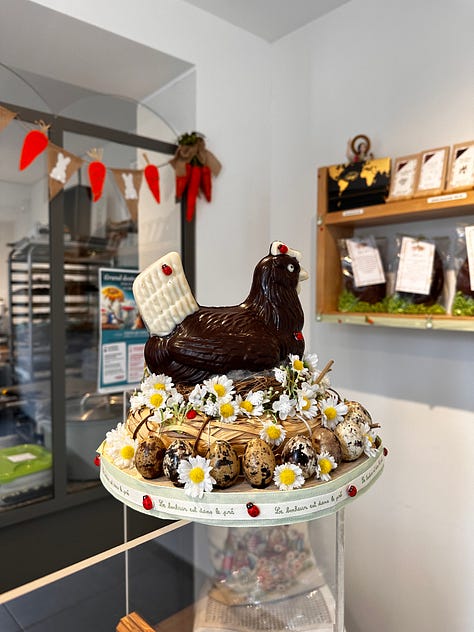
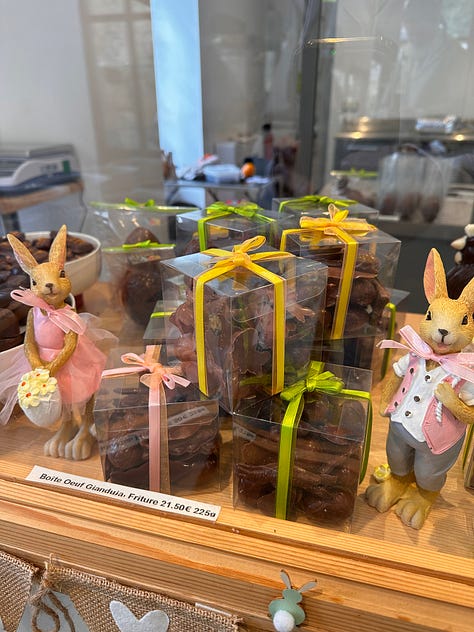
RECIPES YOU MIGHT WANT TO TRY THIS BANK HOLIDAY:

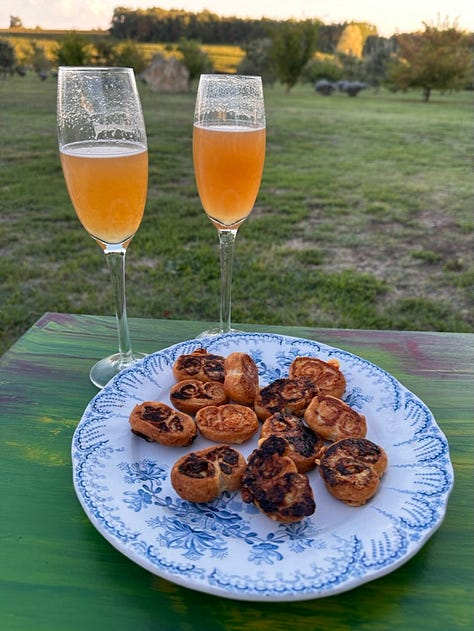
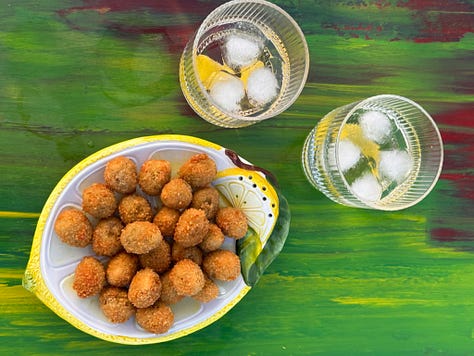
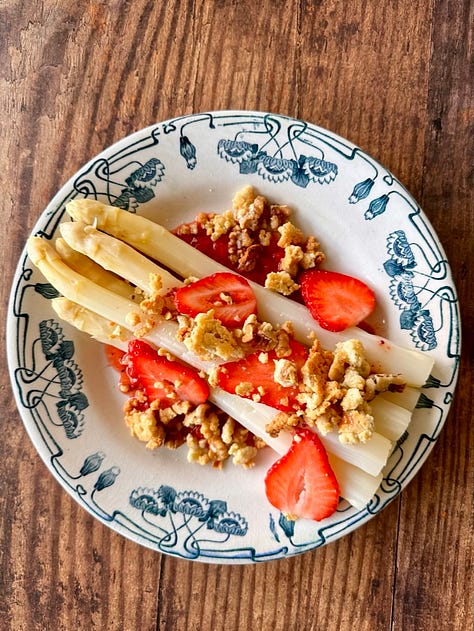
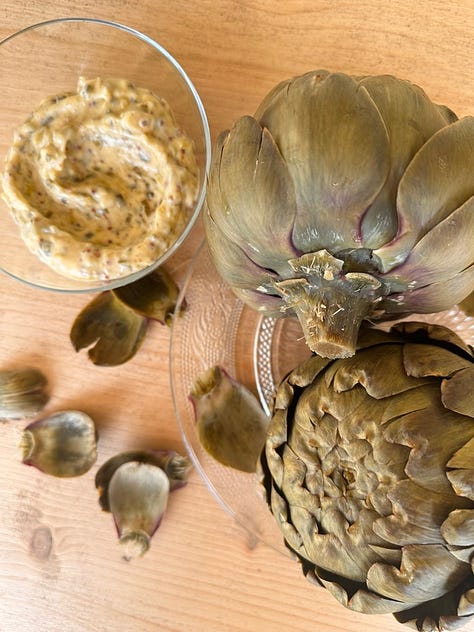
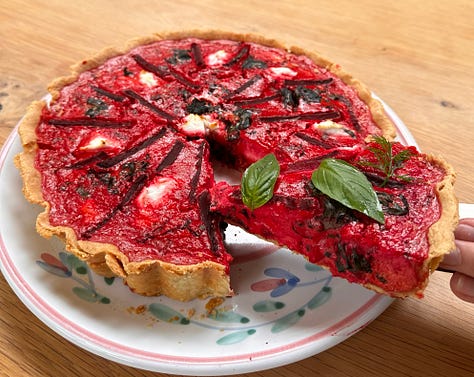
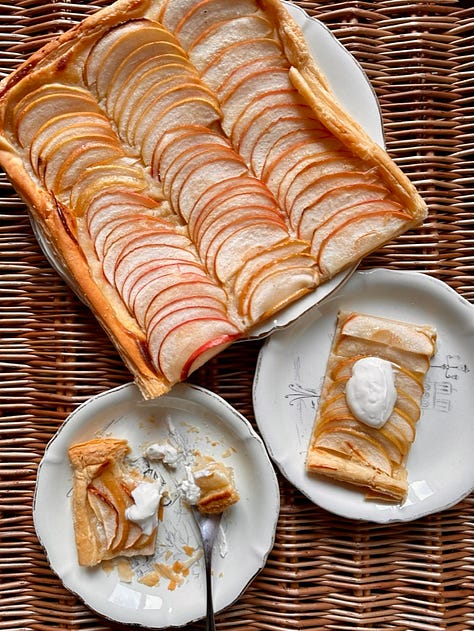
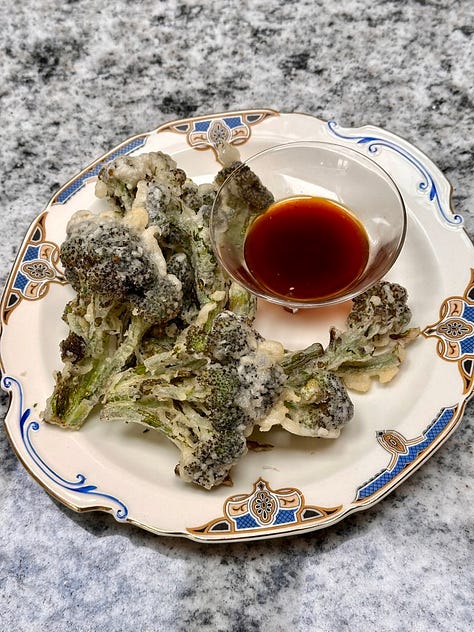
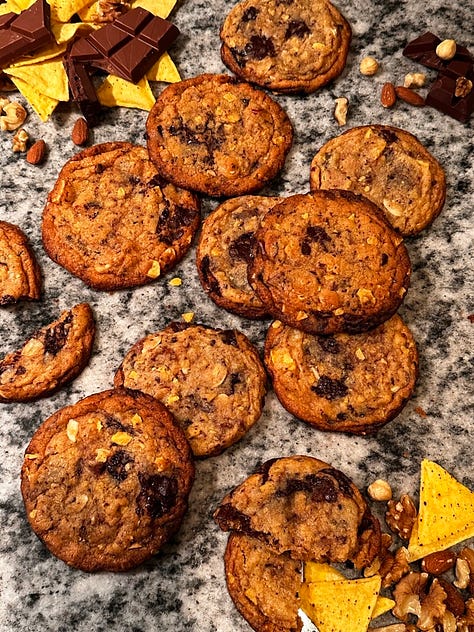
Apéritif - Drinks & Nibbles:
Radishes & Wild Garlic Butter: see below
Starters:
£ Pea, Ricotta & Preserved Lemon Dip With Za’atar Flatbreads: see below
Vegetarian Mains:
Desserts:
£ Rhubarb & Ginger Cheesecake: see below
*Recipes marked with £ are exclusive to paid subscribers.
MY PERFECT EASTER MENU:
Radishes with Wild Garlic Butter
Pea, Ricotta & Preserved Lemon Dip with Za’atar Flatbread
Herby Slow-Cooked Lamb
Celeriac Mash
Spring Salad
Rhubarb & Ginger Cheesecake
Keep scrolling and become a paid subscriber to get all these recipes.
The cheesecake, pea dip and wild garlic butter can all be made in advance and kept in the fridge, leaving you more time to sip something chilled and bask in the spring sun.
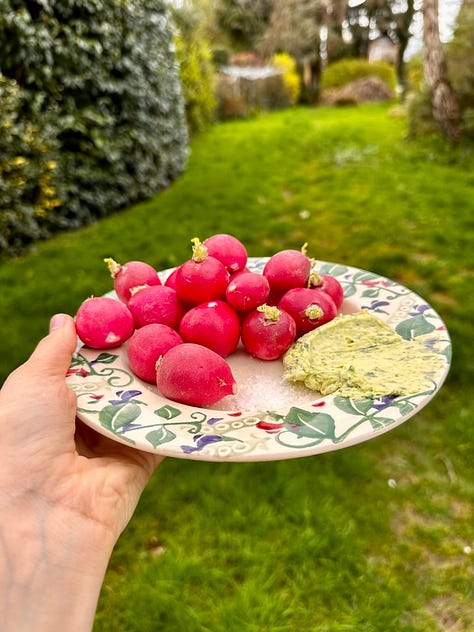
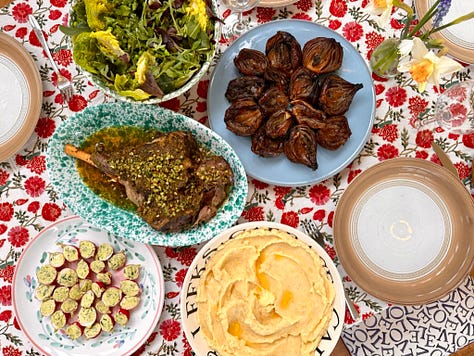

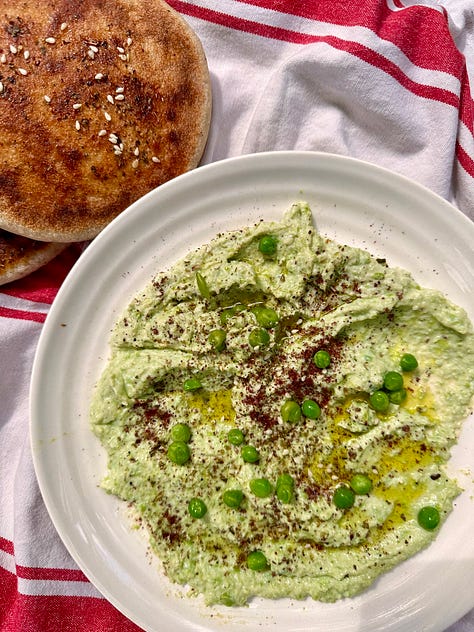
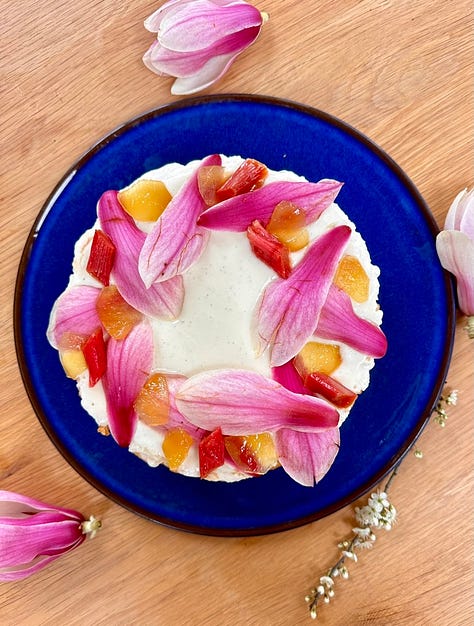

Did you know my paid subscribers also get a recipe each week featuring the spotlight ingredient?
For only £3.99/month, paid subscribers get access to:
A new seasonal recipe every week.
A cook along video for the recipe.
Full access to my archive of newsletters and recipes.
You can unsubscribe in one click.
Easter Menu for paid subscribers:
Radishes & Wild Garlic Butter
Ingredients (serves 4):
240g radishes
90g salted butter
1 lemon, zested
6g wild garlic
Sea salt & black pepper
Method:
Leave the butter out to soften. Dice it into small pieces and flatten with the back of a spoon to speed things up.
Zest the lemon and finely chop the wild garlic, then mix both into the butter along with a bit of black pepper. You can use a mixer or food processor, but I usually just go in with a spatula (less washing up).
Wash the radishes and save the leaves for a pesto or to toss into a salad.
Serve the radishes with the wild garlic butter and a small pile of sea salt. Dip and smother away!
For finger food, halve the radishes and top each with a dab of butter and sea salt, then serve on a platter.
Keep reading with a 7-day free trial
Subscribe to Spoonful of Felicity to keep reading this post and get 7 days of free access to the full post archives.

